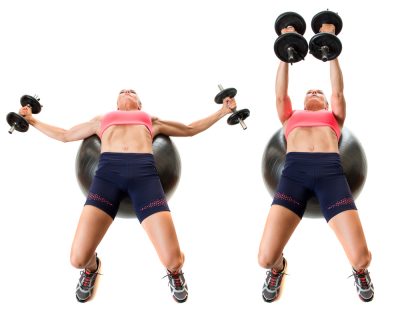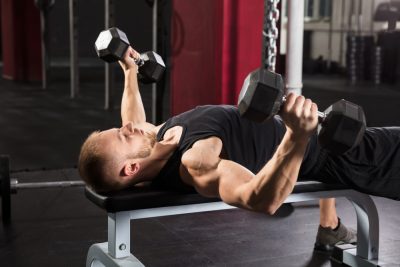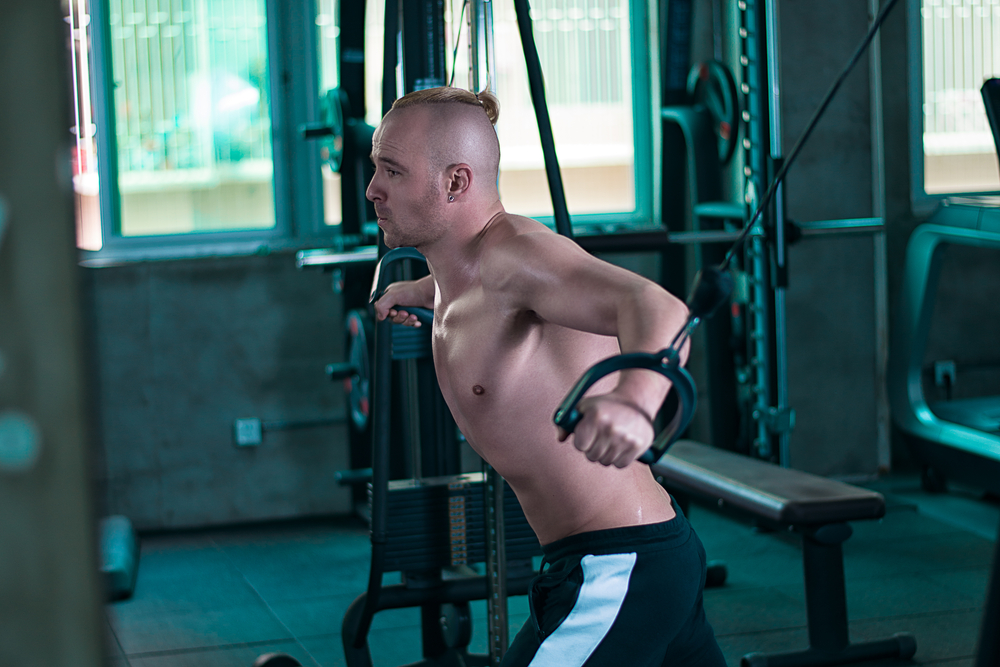The chest fly is an excellent upper body exercise that is done to strengthen the muscles in your arms and chest in a complementary and different way to push-ups. It is without a doubt that push-ups are great in a lot of ways, which includes the fact that they are beneficial to your arms and chest. Learning how to do the chest fly before or after push-ups is essential as you will be able to recruit more of your arms and chest muscles to give you that complete workout.
When it comes to strength training, it is highly imperative that you switch things up and try a new thing every once in a while. The chest fly is an exercise that would give you results that are different from the ones you get when doing push-ups. You can either perform the chest fly on a weight bench or the floor; the weight bench would give you more range of motion. The bench would allow you to go down more while performing the chest fly on the floor would only allow you to move your arms about one or two inches less.
Just as it is with the other strength training movements, it is recommended that you try to perfect your form before you start increasing the weight you are using. Ensure you bend your elbows slightly and slowly lower your arms and also lift them at that pace. You will get better results and also reduce your chances of sustaining an injury thanks to the slow and controlled motion. While doing the chest fly, you will also experience better core and stability strength. Ensure that you keep your back against the floor and that your rib cage is pulled down as this is key to great form. You can try incorporating the chest fly into a strength routine you are utilizing, or you can try it on its own.
Benefits of the chest fly
These are the benefits that are associated with performing the chest fly;
Increases athletic power
Your shoulder and chest muscles are engaged when you swing and hit a ball. So, if you are an athlete that engages in racquet sports or golf, doing the chest fly would improve your swinging power.
Variation stimulates abdominal muscles
You can try to balance your upper back on a stability ball while performing the chest fly to increase the difficulty level of your workout. Adding this variation to your routine would also challenge the side and front parts of your core muscles in addition to working the synergist and pecs muscles. If you are on intermediate exercise, then this variation is perfect for you. Ensure your back is parallel to the ground and as straight as it can be while performing the chest fly to avoid strain and injury.
Tones synergist muscles
The synergist muscles are those extra muscles that provide support to the chest wall, which includes the biceps muscles at the front of your arms and the muscles at the front of your shoulders. When you perform the chest fly, these muscles are strengthened, which would result in increased stability in your chest area. What this does is help reduce the risk of shoulder injuries as your muscles will have enough strength to provide support for your shoulder joint.
Tones pectoralis muscles
When you perform the chest fly, a pushing force is utilized to strengthen your chest muscles. The pectoralis major is the main muscle that is targeted. When you have defined pec muscles, your torso will have a more toned and balanced appearance. When you perform the chest fly, you will most likely experience soreness the next day due to the fact that the pectoralis major, as a big muscle group, does not have as much endurance as the small muscle groups.
Scapular retraction
The chest fly aids in scapular retraction. These would also help you gain strength in your shoulder area and improve your posture. For better shoulder retraction and opening of your shoulder and chest region, you can perform the chest fly several times per week.
Chest opener
The main equipment used when performing the chest fly is dumbbells, and it really helps to open up the chest muscles. When these muscles are opened, you will experience less tightness in your upper body, less upper back pain, and an increased range of motion. Ensure you use light weights when utilizing the chest fly for opening up your chest muscles. This would help you to achieve the full range of motion and not have to overextend. When you extend too far, it could result in an injury.
Chest fly
If you really want to make your chest grow, you have to opt for the chest fly as it is the most common technique that has been proven to be effective. This is an exercise that can be performed with little or no equipment. As a beginner, it is recommended that you start with a lightweight of about 3 – 5 pounds. You should use weights of about 8 – 10 pounds if you have advanced at upper body exercises. As you progress with the exercises, you can increase the weight. Doing the standard chest fly requires that you have access to a set of dumbbells.
Standing chest fly
This is the standing variation of the chest fly, where you would not need to utilize a bench of any kind; you will only need a set of two dumbbells. These are the steps to perform the standing chest fly;
- Hold a dumbbell each in your two hands while standing tall with your feet apart by a distance of shoulder width.
- Your palms should face each other, then raise your arms directly at your front so that they align with your chest.
- Take your arms out to your sides until you fully extend them. They should be in line with your chest for the whole duration of this exercise.
- Revert your arms to their initial position. You are to perform three sets of 10 – 15 reps.
Incline bench dumbbell chest fly
For this exercise, you will need to have access to an incline bench and a set of two dumbbells. These are the steps to perform the incline bench dumbbell chest fly;
- Grab and hold a dumbbell each in your two hands while lying down on the incline bench that has been lowered at a 30-degree angle.
- Begin with your elbows bent and pointing out, and your arms extended to your sides at chest level.
- Exhale slowly and raise your arms above the chest level. Then breathe in and bring your arms back to its initial position at your sides.
- Keep pressing up. You are to perform three sets of 10 – 15 reps.
Dumbbell chest fly

To perform this move, you will need to have access to a flat bench and a set of two dumbbells. These are the steps to perform the dumbbell chest fly;
- Lying on the flat bench, ensure you firmly press your back and head on it. Then, your feet should be placed firmly on the ground on both sides of the bench.
- Then you lift the dumbbell from the ground or ask someone to help hand it to you. Then hold one dumbbell each in your two hands.
- Do not lock out your arms as you lift them above your head to extend them. Your elbow should be bent slightly, then have the dumbbells and your palms facing themselves.
- Make the dumbbells align with your chest by lowering them in an arc motion slowly and inhale while doing it. Do not lock your arms to the side but keep them extended. Also, your arms should not go lower than shoulder level.
- Reverse the arc motion slowly to press the dumbbells up and exhale while doing it. You are to perform three sets of 10 – 15 reps.
Progression
You should try increasing the weight of the dumbbells you are utilizing as you progress with the chest fly. Adding about two pounds per week is a nice and safe way to progress. Also, if you want an additional challenge, you should try doing the chest fly while balancing yourself on an exercise ball. This makes the movement more challenging as your core would have to be recruited to provide stability to your body all through. It is crucial that you perform this move with the correct form to avoid injury and also reap maximum benefits. You can have a certified trainer teach you how to perform the move correctly.
Safety
If you have an arm, shoulder, or back injury, it is highly imperative that you first talk to your healthcare provider about the risks of you performing this exercise. Your healthcare provider would be able to give you reasons not to perform this move or recommend other variations. You can also try using a lighter weight if you are finding it difficult to perform the move properly. You can get familiar with the motion by practicing the move without the use of dumbbells. When you have perfected your form, you can then add weights.



